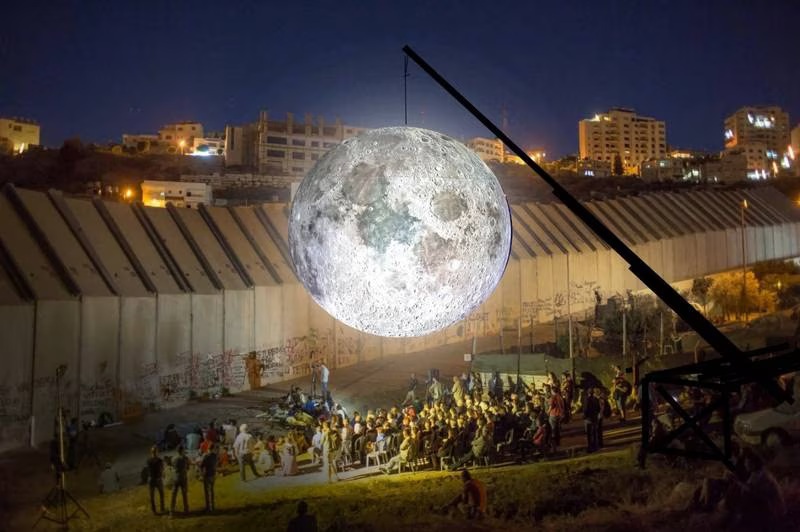Razmig Bedirian
A giant Moon artwork will be installed at the Aida refugee camp in the occupied West Bank this weekend.
Titled Museum of the Moon, the spherical artwork was created by British artist Luke Jerram and spans seven metres in diameter. Its facade is composed from high-definition images of the lunar surface taken by Nasa.
The artworkwill be installed at Aida camp on Saturday between 1pm and midnight local time. The installation will be conducted by a team of Palestinians, who were trained by Jerram during his recent visit to the West Bank. The artist stayed at Aida camp for a week, meeting community figures and learning more about their experiences.
:quality(70)/cloudfront-eu-central-1.images.arcpublishing.com/thenational/3HPDYI4CNBETRJACSVERPAW5MM.JPG)
With the artwork’s presentation at the camp, Jerram aims to project hope and show solidarity with Palestinians.
Though Museum of the Moon will be at Aida camp temporarily, Jerram is also working on a new, undisclosed project with the camp, in hopes of supporting the community in the longer run.
“Everyone here is traumatised through generations of repression and brutalisation,” the artist said. “Grief and anger are passed down from one generation to the next. From what I’ve learnt in Aida camp about the way Israeli authorities are treating Palestinians, the government has created an oppressive regime and a real state of apartheid.”
Museum of the Moon is being delivered to Aida camp in partnership with the Alrowwad Centre, Inad Theatre and Power Group.
There are several copies of the artwork touring the world in temporary exhibitions that are often supplemented with music. It was first revealed in 2016 at the Bristol International Balloon Fiesta in the UK.
The artwork has since been exhibited in several countries, such as France, UK, US, the UAE, Canada, Romania and Belgium. It has also been acquired by several museums around the world, including the Powerhouse Museum in Sydney, Australia; the Houston Museum of Natural Science in the US; the Canadian Museum of Nature in Ottawa; as well as OliOli in Dubai.
Jerram was invited to present the artwork in Israel; however, he instead chose to install it at Aida camp to raise awareness about the plight of the Palestinians.
:quality(70)/cloudfront-eu-central-1.images.arcpublishing.com/thenational/ZB77TREZIMNLYGASLU37KOE6ZQ.jpg)
“Through touring works internationally for over 25 years, I’m aware how public art often gets used by authorities to present a place as civilised, creative and democratic,” he said.
“I’ve been invited to present my touring artwork, Museum of the Moon, in Israel several times now, but have always refused because of the situation here. I’ve opted instead to present my artwork in Aida camp, to show solidarity with the Palestinian people. I’d like the installation to highlight the continuing injustice of the situation there.
“I’d also like the peace and beauty of the Moon sculpture to help highlight the ugliness, brutality, injustice of the concrete walls which are trapping and confining Palestinian communities.”
The Moon and its symbolism have great significance in the culture of the region, from its use as a celestial light source to help navigate the desert at night, to its role in religious contexts, such as determining timings for Ramadan and Hajj.
“Whilst across the world people may be divided by walls and barriers, we are all connected by the night sky and a view of the same moon. I hope through supporting the cultural boycott of Israel and presenting my work in the West Bank, the artwork gives hope to Palestinians and reminds them their plight has not been forgotten by the outside world,” the artist said.
A representative from Alrowwad, the camp’s non-profit community arts organisation, said the artwork will allow residents of Aida camp and its neighbouring areas a view of the full Moon.
“For the first time ever, the Moon will be close and not in the sky behind the wall. The moon is here to comfort those in agony, to give them hope for freedom and return.”
Courtesy: thenationalnews







